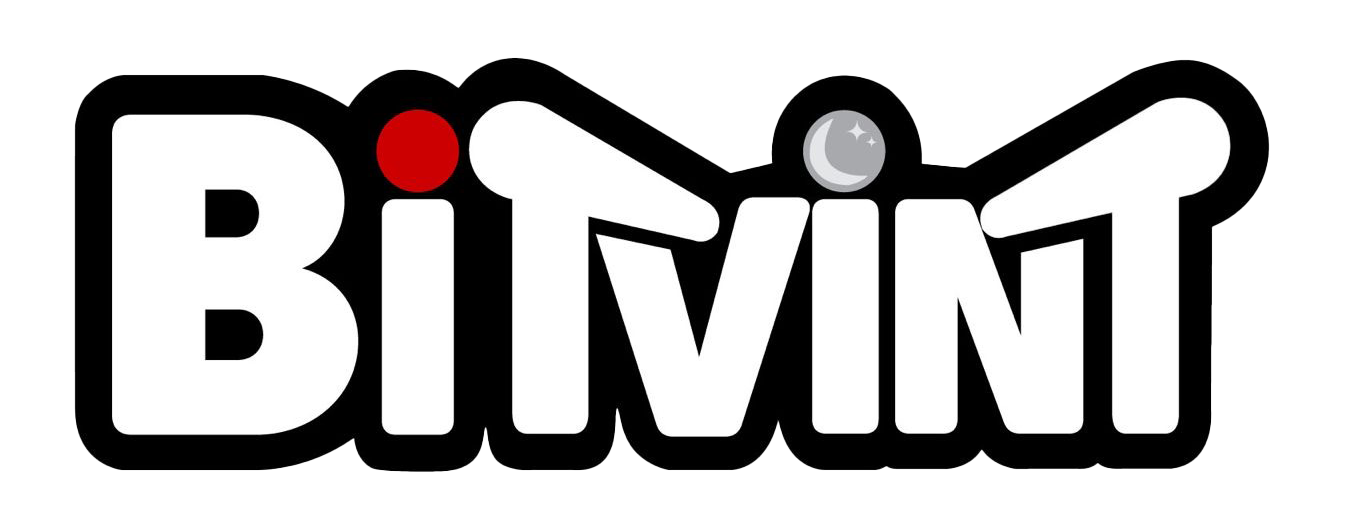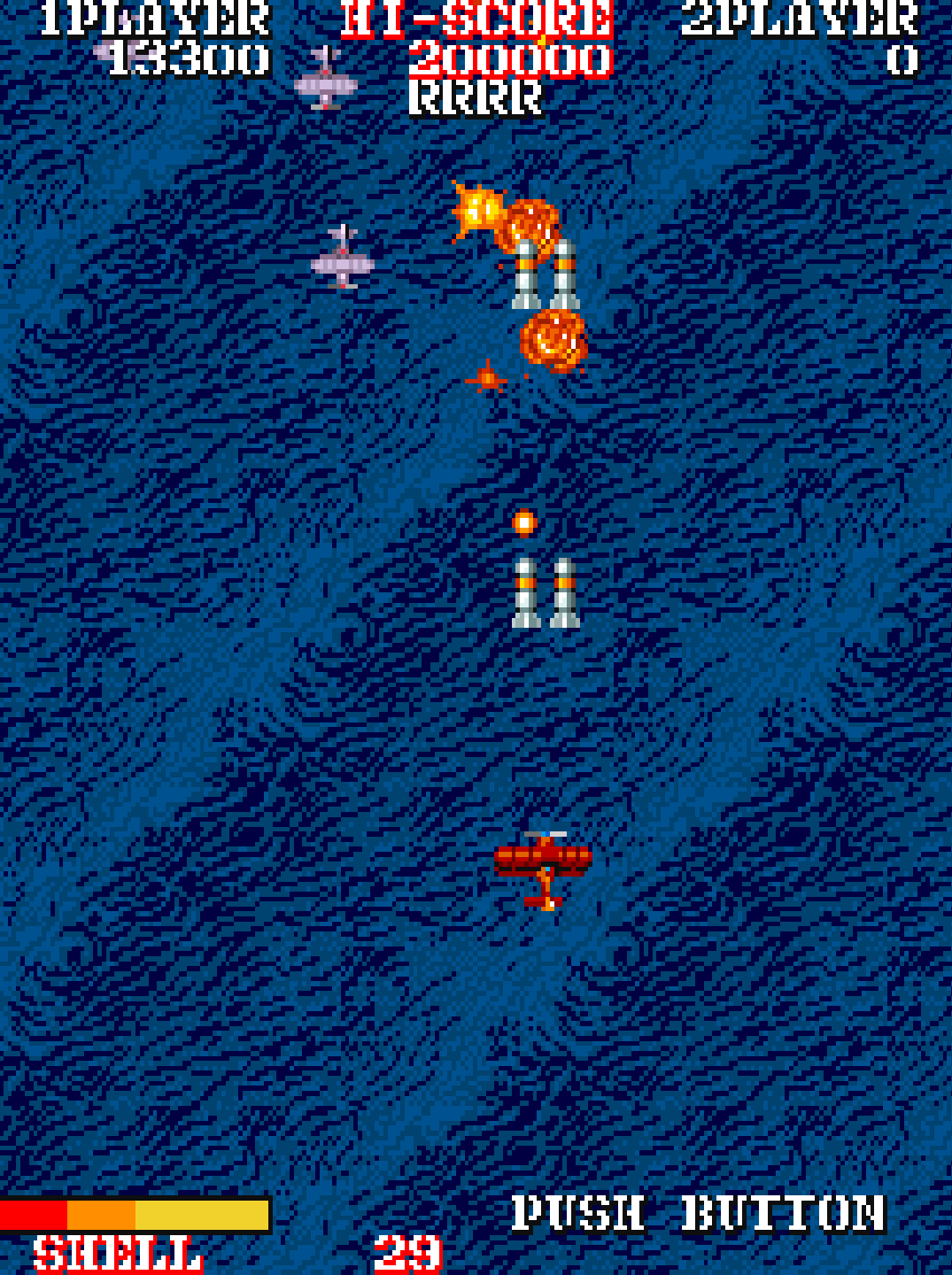Introduction
Released by Capcom in 1987, 1943 Kai: Midway Kaisen is an updated version of 1943: The Battle of Midway, the second game in the 19XX vertical shooter series. This enhanced edition, originally developed for the Japanese market, features faster gameplay, new enemy patterns, improved graphics, and a different soundtrack. Built on the foundation of the original 1943, Kai pushed the limits of Capcom’s arcade hardware and offered a more intense, action-heavy experience.
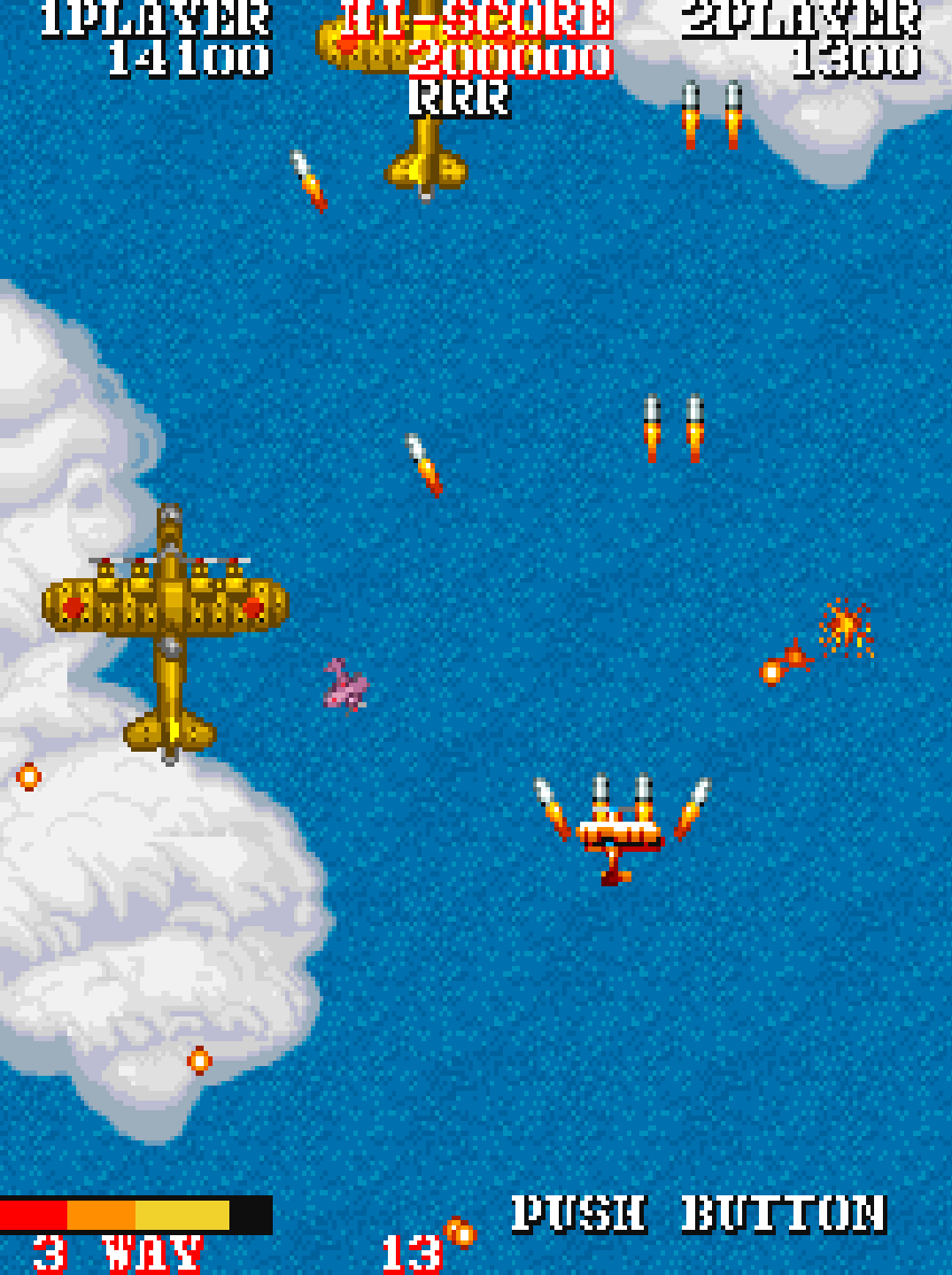
Development and History
- Developer: Capcom
- Publisher: Capcom
- Release Date: 1987
Designed as a refined version of 1943, Kai (which means “modified” in Japanese) introduced numerous mechanical and audiovisual upgrades. It was released primarily for Capcom’s arcade hardware in Japan and later saw international recognition through compilations like Capcom Classics Collection Reloaded and Capcom Arcade Stadium.
Although not a direct sequel, 1943 Kai was seen as a “remix” of the original game with new stage layouts and additional polish. It was especially notable for its faster pace and visual updates.

Gameplay Video
Gameplay and Mechanics
Core Gameplay
Like its predecessor, 1943 Kai is a vertically scrolling shoot-’em-up that places players in the cockpit of a lone fighter aircraft battling enemy ships, planes, and turrets.
- Energy Meter: Replaces traditional lives—taking hits or using special attacks drains energy.
- Weapon Upgrades: Includes machine guns, spread shots, and lightning attacks.
- Special Attacks: Thunder attacks damage all enemies on screen at the cost of energy.
- Aerial and Naval Combat: Players fly over fleets, islands, and open ocean battling varied enemy types.
Key Differences from 1943: The Battle of Midway
- Faster Gameplay: Increased game speed and enemy aggression.
- Rebalanced Difficulty: Enemies spawn more frequently and attack more quickly.
- New Enemy Patterns: Rearranged enemy waves and boss encounters.
- New Music and Sound Effects: More intense soundtrack to match the heightened pace.
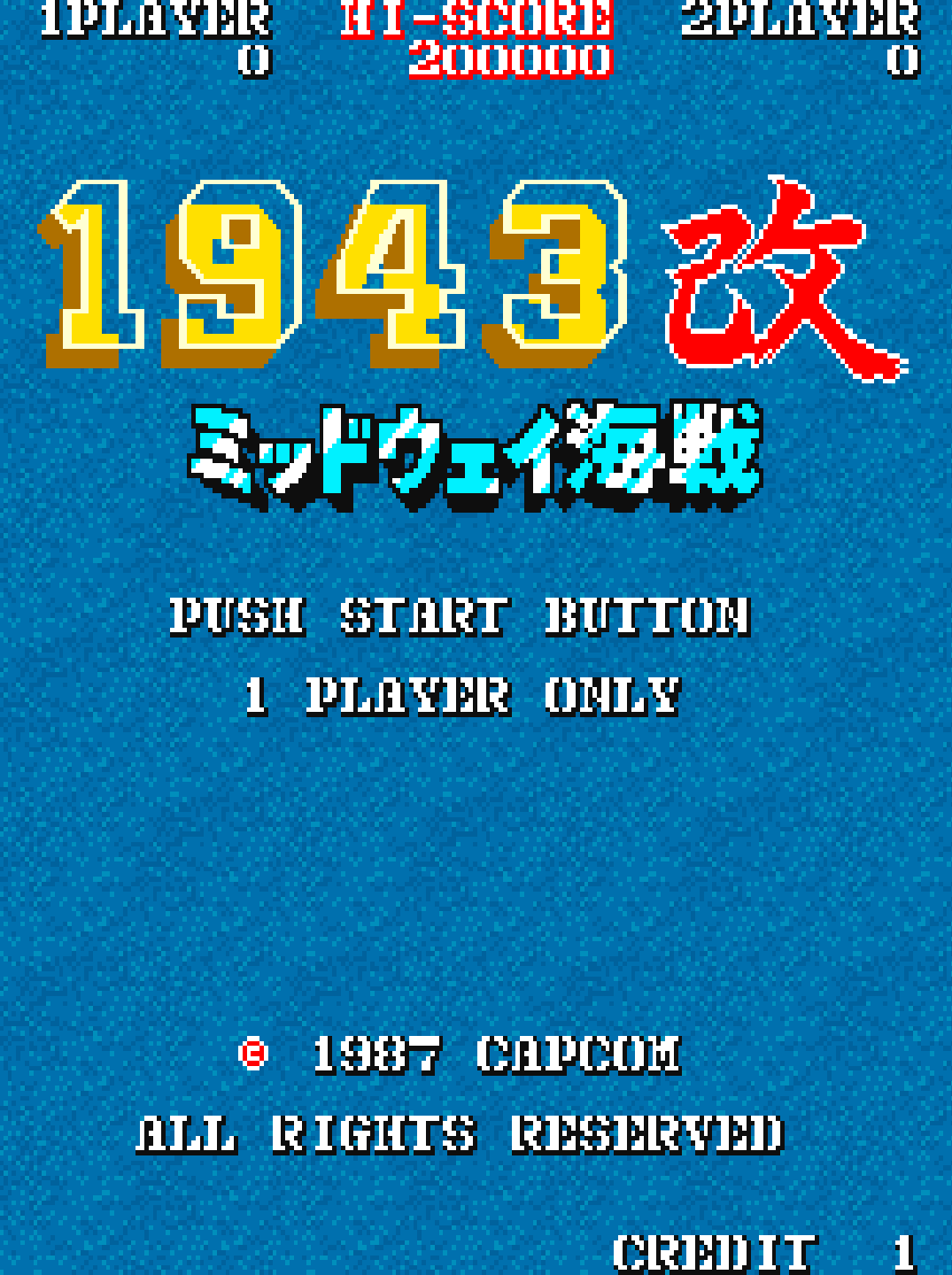
Cultural Impact and Legacy
- Refinement of the 1943 Formula: Kai was praised for its improved difficulty and arcade appeal.
- Japan-Focused Release: Originally exclusive to Japanese arcades.
- Later Re-Releases: Included in compilations that introduced it to Western audiences.
- Collector Favorite: Valued by shoot-’em-up fans for its challenging gameplay and aesthetic tweaks.
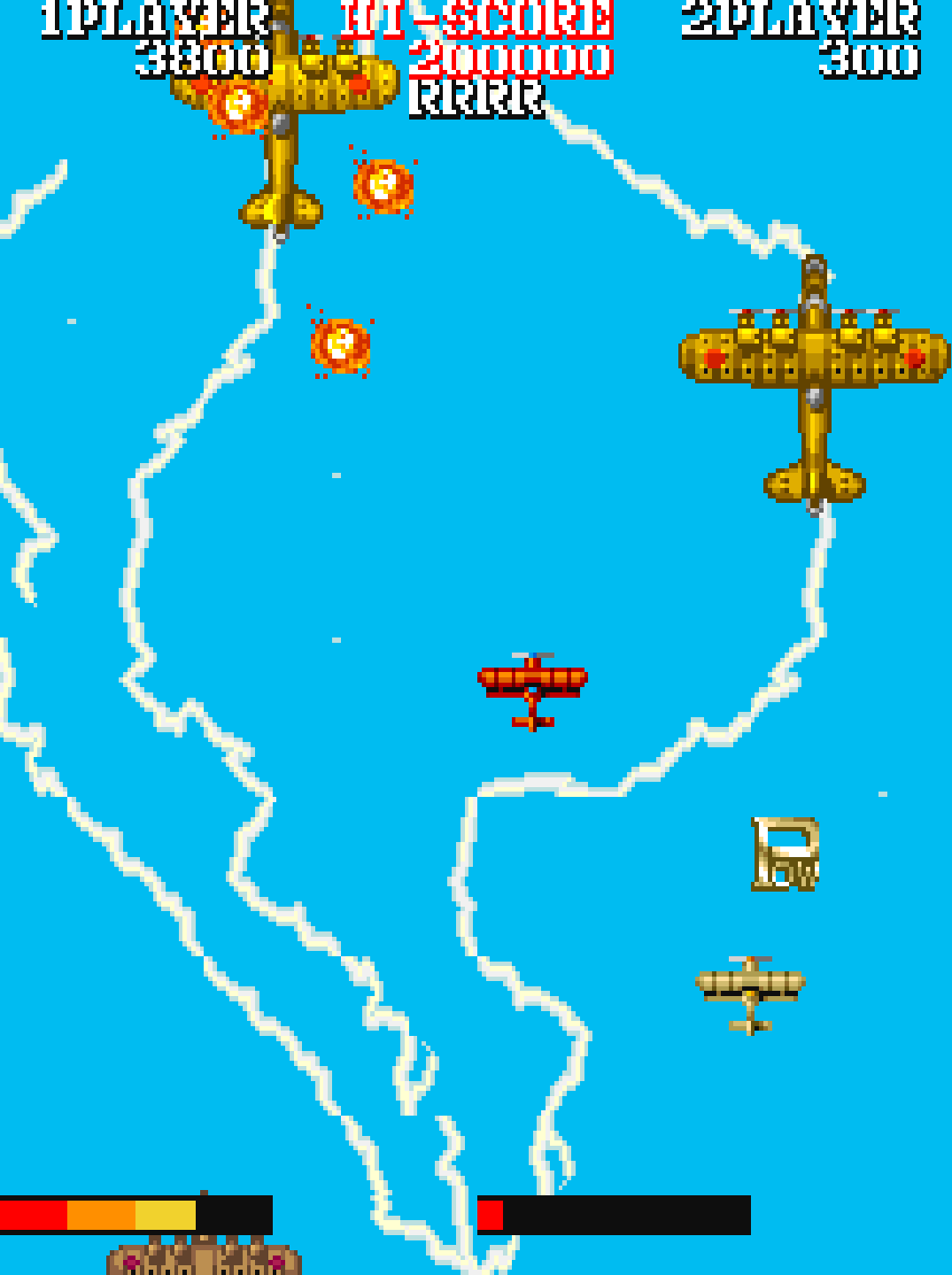
Fun Facts
- Aircraft Change: The player controls a different fighter plane model than in 1943.
- Kai Naming Convention: “Kai” is often used in Japanese games to denote updated or remixed versions.
- Stage Layouts: Many levels are heavily reworked from the original.
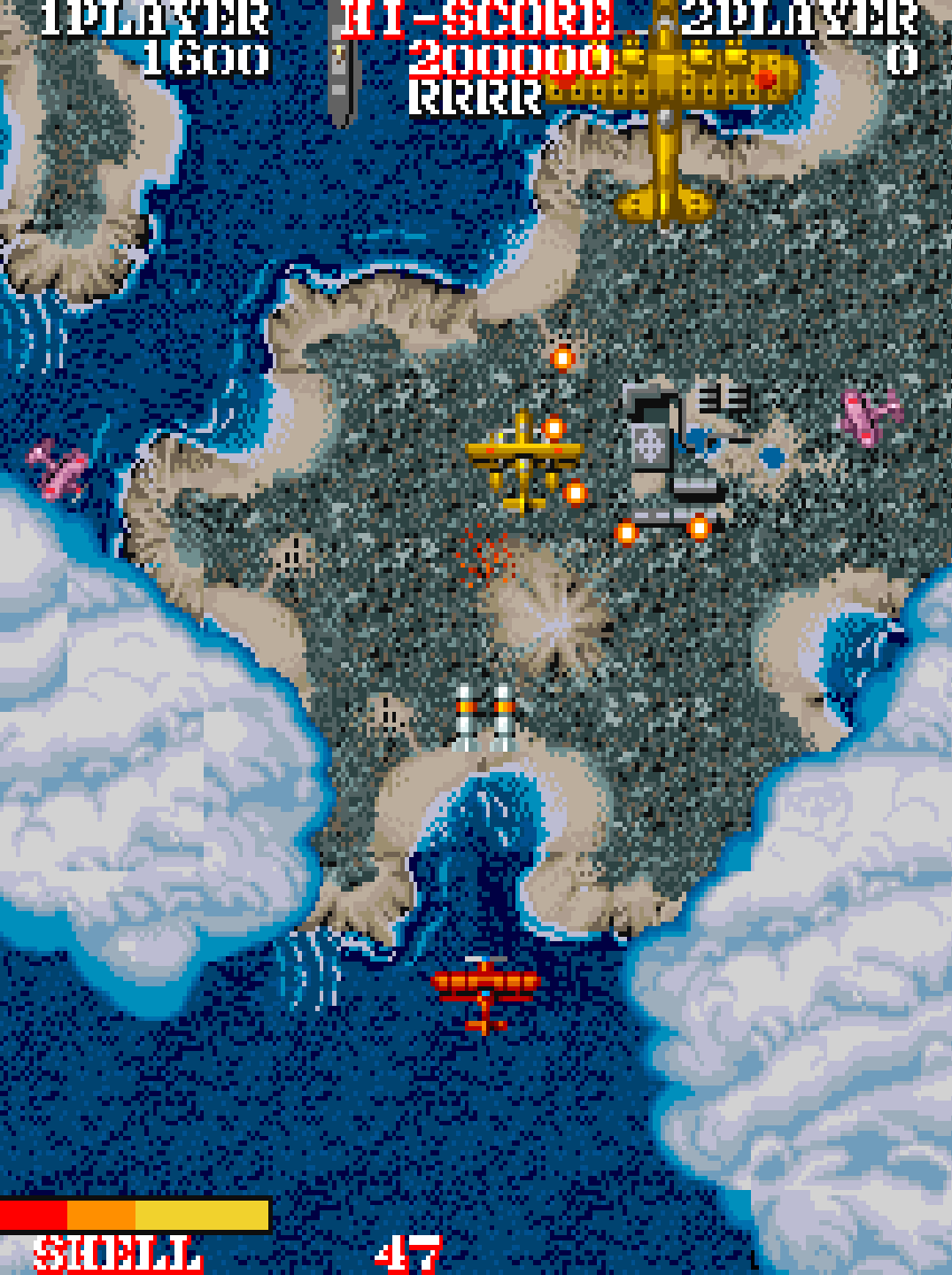
Conclusion
1943 Kai: Midway Kaisen is a streamlined, faster, and more challenging evolution of Capcom’s classic WWII shooter. Its graphical improvements, tighter mechanics, and higher difficulty curve made it a standout in arcades and a favorite among hardcore shoot-’em-up fans. Though initially limited to Japan, it has since earned recognition worldwide as one of the most refined entries in the early 19XX series.
